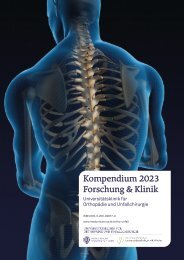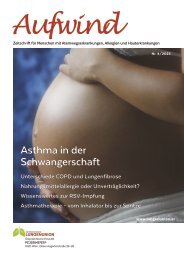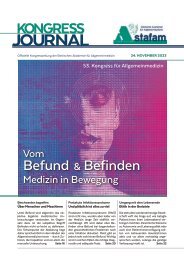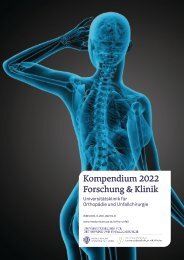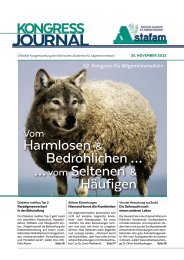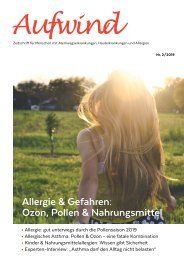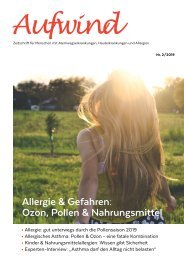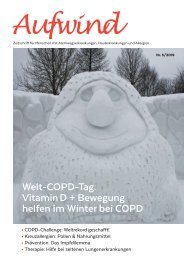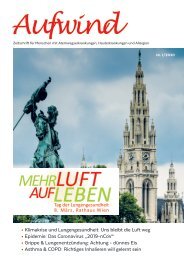Kompendium 2020 Forschung & Klinik
Das Kompendium 2020 der Universitätsklinik für Orthopädie und Unfallchirurgie von MedUni Wien und AKH Wien (o. Univ.-Prof. R. Windhager) stellt einen umfassenden Überblick über die medizinsichen Leistungen und auch die umfangreichen Forschungsfelder dar. Die Veröffentlichungen zeigen die klinische Relevanz und innovative Ansätze der einzelnen Forschungsrichtungen. Herausgeber: Universitätsklinik für Orthopädie und Unfallchirurgie MedUni Wien und AKH Wien Prof. Dr. R. Windhager ISBN 978-3-200-07715-7
Das Kompendium 2020 der Universitätsklinik für Orthopädie und Unfallchirurgie von MedUni Wien und AKH Wien (o. Univ.-Prof. R. Windhager) stellt einen umfassenden Überblick über die medizinsichen Leistungen und auch die umfangreichen Forschungsfelder dar. Die Veröffentlichungen zeigen die klinische Relevanz und innovative Ansätze der einzelnen Forschungsrichtungen.
Herausgeber: Universitätsklinik für Orthopädie und Unfallchirurgie
MedUni Wien und AKH Wien
Prof. Dr. R. Windhager
ISBN 978-3-200-07715-7
You also want an ePaper? Increase the reach of your titles
YUMPU automatically turns print PDFs into web optimized ePapers that Google loves.
TOP-Studien<br />
22<br />
Quantitative Biochemical MRI<br />
of Hyaline Cartilage<br />
„Our study demonstrated that T2<br />
mapping enables the quantification<br />
of patellar cartilage defect progression<br />
in untreated defects over time,<br />
[indicating its potential as a]<br />
predictive marker of patellar<br />
cartilage degeneration.“<br />
Sebastian Apprich<br />
The department of Orthopedic and Trauma Surgery at the Medical<br />
University of Vienna has conducted a successful interdisciplinary<br />
collaboration with the onsite High Field MR Centre of Excellence<br />
of Prof. Trattnig for years. A major goal is the implementation and<br />
improvement of new imaging techniques to explore the natural<br />
course of cartilage defects and its potential repair techniques.<br />
As a result of this collaboration the article „Potential predictive value of<br />
axial T2 mapping at 3 Tesla MRI in patients with untreated patellar cartilage<br />
defects over a mean follow-up of four years“ was published in the Journal of<br />
Osteoarthritis and Cartilage in <strong>2020</strong>. Magnetic resonance imaging (MRI), with<br />
its high spatial resolution and its capability for superior soft tissue contrast,<br />
represents the gold standard for diagnosis of incipient osteoarthritis, the<br />
follow up of its natural course, and the treatment options.<br />
High resolution MRI and newly developed semi-quantitative scoring systems<br />
allow for the morphological assessment of the whole joint in patients<br />
with Osteoarthritis (OA) (e.g. MOAKS (MRI Osteoarthritis Knee Score) and<br />
in patients after surgical cartilage repair (Whole joint MRI assessment of<br />
surgical cartilage repair of the knee: cartilage repair osteoarthritis knee<br />
score (CROAKS)). Additionally, new imaging techniques (T2/T2* Mapping,<br />
dGEMRIC, Sodium Imaging, gagCEST Imaging, …) have evolved over the<br />
recent year, which enable a deeper sight into the compositional structure<br />
of hyaline cartilage itself.<br />
Study:<br />
Apprich SR, Schreiner MM,<br />
Szomolanyi P, Welsch GH, Koller<br />
UK, Weber M, Windhager R,<br />
Trattnig S. Potential predictive<br />
value of axial T2 mapping at<br />
3 Tesla MRI in patients with<br />
untreated patellar cartilage<br />
defects over a mean follow-up<br />
of four years. Osteoarthritis<br />
Cartilage. Osteoarthritis Cartilage.<br />
<strong>2020</strong> Feb;28(2):215–222<br />
Advantages of T2 Mapping<br />
T2 mapping has proven the capability to gain information about water<br />
content and structure of the collagen fiber network of hyaline cartilage<br />
by assessment of quantitative T2 relaxation times. For several reasons, T2<br />
mapping provides some major advantages over other techniques. On one<br />
hand it is relatively independent from the available field strength of the MRI<br />
scanners and can be performed using a 1.5 Tesla scanner and upwards, on<br />
the other hand it does not require the administrations of a contrast agent<br />
and is feasible within a reasonable scan time.<br />
Within the aforementioned publication, we demonstrated the potential of<br />
axial T2 mapping for quantification of untreated early-stage patellar cartilage<br />
lesions over time and assessed its capability as a potential predictive<br />
marker for future progression. Our study cohort consisted of thirty patients<br />
(mean age, 36.7 ± 11.1 years; 16 males), with early-stage patellar cartilage




